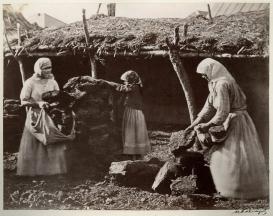Based upon works of medical practitioners and ethnographers, the project explores the environmental imagery of animal waste and the corresponding human/animal division in the nineteenth-century Russian Empire. Tracing ethnographic accounts and medical topographies of imperial landscapes, from Baltic farmers to reindeer herders of the Russian High North, it scrutinizes explanatory models and discursive habits of the two field practices, both centered upon the great unknowns of the Russian Empire and their particular adjustments to socially and environmentally severe habitats. In these contexts, the problem of animal waste management was intimately related to the questions of humanness, versatile cultures of hygiene, and configurations of embodiment. The project analyses the observers’ rationales behind their treatment of the issue of human-animal co-habitation against the ongoing debate on progress and civilization. Such a perspective enables to discern their standpoints and contextualize the scientific narratives of the era which had a huge impact on subsequent Russian modernities.

Project
(2021-2023)
